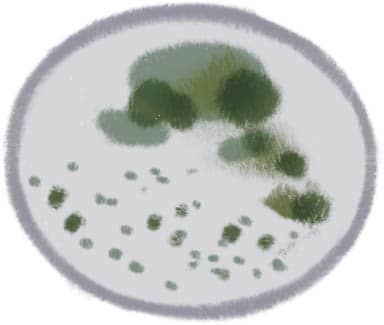 LAB 16
LAB 16 
Alexander Fleming b. 1881

A BIG FAMILY
Alexander Fleming was born in beautiful farm country at Lochfield near Darvel in Ayrshire, Scotland in 1881. After growing up surrounded by seven siblings, he went to college in London and then went to school for his medical degree. While he was there, Alexander became interested in microbiology after working with Sir Almroth Wright, who was a pioneer in vaccine therapy. On June 28, 1914, World War I began and Alexander found himself at one of the main hospital areas for wounded soldiers in Boulogne, France.
A DEADLY PROBLEM
In the hospitals, many soldiers who were saved by surgeons or didn’t have life-threatening injuries died of infections. Alexander realized that the antiseptics being poured on wounds to kill bacteria weren’t effective. They were only making the patients sicker and not reaching bacteria deep inside. He recommended keeping wounds clean and dry to kill bacteria, but few people listened to him.
AN ACCIDENTAL DISCOVERY
Following the war, Dr. Alexander Fleming continued studying bacteria, searching for substances in the human body that could kill harmful microbes. Legend has it that he discovered a substance he named “lysozyme,” which could kill some types of bacteria, when his nose dripped into a bacterial culture. Another lab accident resulted in his discovery of penicillin. In 1928, he’d been on vacation with his family and came back home to a bunch of moldy petri dishes in his lab. “That’s funny,” he said, noticing that there was an area around one moldy spot where the bacteria had been destroyed. The bacteria-killing mold turned out to be Penicillium.
PENICILLIN
Molds are living organisms called fungi, which are not related to bacteria. Fleming named the bacteria-killing substance “mold juice” at first, and then changed the name to “penicillin,” after the mold Penicillium. “One sometimes finds what one is not looking for,” he said. In 1945, Alexander Fleming shared the Nobel Prize with Ernst Boris Chain and Sir Howard Walter Florey “for the discovery of penicillin and its curative effect in various infectious diseases.” He died in 1955.
IN TODAY’S WORLD
Alexander Fleming later discovered that certain bacteria could develop resistance to penicillin. It is still used to fight infections today, but scientists are always searching for new antibiotics to treat strains of bacteria that are resistant to known antibiotics.

Alexander Fleming discovered the antibiotic called penicillin by accident, when some of his bacterial cultures were contaminated by blue-green mold, which we now call Penicillium mold. In this lab, see how many types of fungi you can grow on stale bread. Seal plastic bags as you study the molds, to prevent inhaling mold spores which can cause allergies. 1 Cut bread into pieces small enough to place in a plastic zipper bag. Fig. 1. Fig. 1. Collect pieces of bread for growing mold. 2 Add several types of bread to different bags, if possible. Fig. 2. Fig. 2. Add bread to bags. 3 Label the bags with the date and the bread ingredients, if you know what they are. 4 Put the bags in a dark, room-temperature drawer or a closet. 5 Keeping the bread in the bags, use a magnifying glass to check the bread every day for fungal growth. Fig. 3. Fig. 3. Check bread for fungal growth. 6 Record the color and texture of mold growing on the bread. Is it filamentous (like tiny threads), powdery, fuzzy, or slimy? Fig. 4, Fig. 5. Fig. 4. Record the color and texture of the fungal growth Fig. 5. Look for blue and green Penicillium mold. 7 After you observe the mold, seal the bags and throw them away with the bread inside. CREATIVE ENRICHMENT Grow microbes on agar plates (Lab 10) and look for large, colorful fungal colonies growing beside the smaller bacterial colonies. THE BIOLOGY BEHIND THE FUN Fungi are a kingdom of spore-producing organisms which feed on organic matter. They can be found all around the world, and the group includes molds, yeast, mushrooms, and toadstools. Fungi contain a molecule called chitin in their cell walls and do not perform photosynthesis. Penicillium is a genus of the fungi family which contains more than 300 species. Besides being important for food production, some Penicillium species produce a chemical called penicillin, which can kill certain bacteria. Some of the mold you observe growing on bread likely belongs to the Penicillium group. Penicillium mold are often green or blue and the shades can range from navy to turquoise. Some types of mold that grow on bread can make you sick, so it’s best avoid eating moldy baked goods.FUNGI/PENICILLIN
MATERIALS
SAFETY TIPS AND HINTS
PROTOCOL





